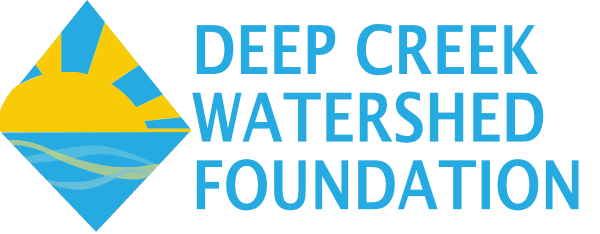Submerged Aquatic Vegetation and Sedimentation Mitigation Plan
Background
Goal #5 of the Deep Creek Watershed Management Plan1: “Manage SAV in Deep Creek Lake to maintain and improve the ecological stability of the lake, while working with waterfront landowners to minimize the interference of SAV with recreational uses of the lake around docks.”
Goal #6 of the Plan: Prevent erosion and sedimentation to the greatest extent possible to protect water resources from increased sediment loading and associated water quality problems.
Summary
A solution to the mitigation of sediment and submerged aquatic vegetation (SAV) impacts to dock owners around Deep Creek Lake may be to lower the water level of the lake during winter months to the lower rule band (LRB).
A. SAV Impact Mitigation
During the outlet structure repair of the impoundment at New Germany State Park the Department of Natural Resources (DNR) determined that the excessive SAV growth, particularly in the upper reaches of the impoundment could perhaps be mitigated by allowing the beds to freeze while the winter water levels were down during construction. After the trial DNR determined that the method was not successful. Two factors contributed to that failure. 1. The water level was not dropped as far as contemplated. The contractor submitted a request to use a coffer dam so that the water level would not have to be dropped down so far as originally contemplated. 2. The winter was mild.
Dropping the lake level to the LRB from November to February would allow the SAV beds to freeze and inhibit the growth. It is not the goal to remove them. The exiting beds are mainly native plants. If these beds are destroyed by dredging or poison other invasive species will populate the niche.
B. Shoreline Sedimentation Mitigation
For most of the history of Deep Creek Lake the water levels peaked in June and declined rather sharply toward Labor Day. Based on the elevation of what was an island off what is now The Blakeslee, the water level was about 2457 by Labor Day.
Beginning about 1970 there was pressure brought to bear to keep the water level higher to afford development back in the shallow waters. Keeping the water high through the summer and into fall saw shoreline erosion, and beaches went from sorted pebbles and cobbles to mud. Page 17 of the WBCM Deep Creek Lake: A Sediment Study, DGS Project No. 008-132-0102 states “In some areas the current shoreline (2012) does appear to vary from the 1972 shoreline by approximately 5-15 feet.”
The 5-15 feet of shoreline loss noted above is now sitting ten to fifteen feet out from the “new” shoreline. That deposition is the basis of most property owner’s complaints. Mud around docks also promotes the growth of submerged aquatic vegetation (SAV). The nutrients from the sheet flow from lawns that extend to the high-water line and nutrients introduced into the water from the resident goose population have also fueled the increase in SAV impacts.
Proposed Solution
Lowering the lake level to the LRB from the 15 October level to 2456 by 31 October and to 2455 by 30 November, and remain at 2455 until 31 January will inhibit the growth of SAV in the lake bottom above 2455 by exposing them to freezing temperatures.
The lower lake levels will allow normal existing sediment erosive action to remove sediment and nutrients to a lower level. When the water level returns to full pool there will be six feet of water above the 2455 contour placing some of the plants under six feet of water with the attending attenuation of the sun strength.
Lowering the lake levels to the recommended depths will not require any permit or study work, and will be successful in reducing SAV growth and will mitigate the impact of sediments around the docks.
For future consideration, if the recommended procedure is deemed to be effective, the lake levels could be reduced even further to enhance the benefit.
Please address questions or comments to:
Morgan C. France
729 Chadderton School Road
Oakland, Maryland 21550
silverdaggr@gmail.com 301 616 5097
Respectfully submitted,
Morgan
